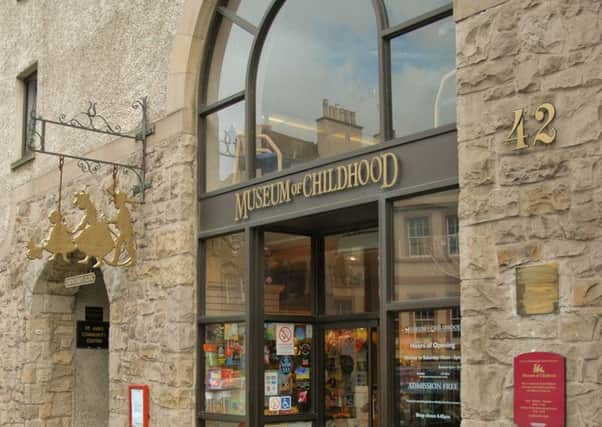Edinburgh museum will not remove golliwogs - despite complaints


The toys have been part of the permanent exhibition at the Museum of Childhood on the Royal Mile since it opened in 1955.
The dolls were popular in the 20th century, but have fallen out of favour because of their racial connotations.
Advertisement
Hide AdAdvertisement
Hide AdSome visitors to the attraction, Britain’s oldest childhood museum, complained and bosses were forced to put up a disclaimer sign insisting they were not on display to “uphold racist stereotypes”.
It was thought the dolls would be removed from the museum following a refurbishment, which has just taken place, but two of them will remain on show when it reopens to the public this week.
Lyn Stevens, its curator, said that while the word had been used in “a negative and racist” way, the dolls would stay on display as a significant part of British childhood from the 1890s to the 1950s.
It will show just two minstrel-clad golliwogs and two books of the many that featured them and they will be used to educate visitors about racism.
Advertisement
Hide AdAdvertisement
Hide AdThe display has been remodelled in consultation with Coalition for Racial Equality and Rights (CRER) in Glasgow and experts at Edinburgh university. Comments from the museum’s visitor book have been taken into account.
Miss Stevens said: “We could choose not to display them but then we would be deliberately missing out on childhood experience.
“We are making sure they are in one area with interpretation that talks about how it is recognised that the character portrayed in a golliwog is racist.
“Obviously the word golliwog has been used in a negative and racist way and people sometimes use them to project a certain message. We face that discussion and include it in our interpretation.”
Advertisement
Hide AdAdvertisement
Hide AdJatin Haria, executive director of CRER, said: “We believe it’s better for people to know more about the racist skeletons from their past. Only by facing up to our history can we hope to create a better tomorrow. Obviously, content and context is crucial.”
The sign which had been placed on the previous golliwog display read: ‘We recognise that some visitors may feel the golliwogs on display in the museum represent negative racial stereotypes.
“We do not uphold such stereotypes and do not wish to cause any offence; but believe it is right to display these toys because they were such a signifi-cant part of British childhood from the 1890s to the 1950s.
“As soon as we have the opportunity to upgrade the museum’s display, we will consider alternative ways of interpreting them and reflecting the changes in attitudes towards them.”
Advertisement
Hide AdAdvertisement
Hide AdThe original golliwog doll, based on a character created by US cartoonist Florence Kate Upton in 1894, is at the Victoria and Albert Museum of Childhood in London.
The Edinburgh museum will also feature its first Barbie and Xbox, after a £200,000 revamp of its ground-floor galleries in what is expected to be a rolling overhaul of the five-storey museum, which attracts 250,000 visitors a year.
It will also show an icon of Scottish childhood: the tawse, used for punishment across Scottish schools. Made of leather, with a split for exacting extra pain, it has a stand of its own.